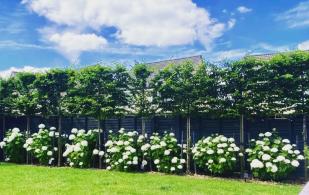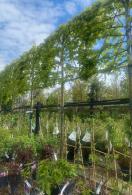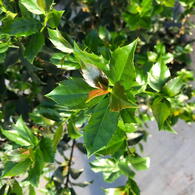Topiary Boxhead Hornbeam Trees
1. Add items to basket
2. Go to the basket
3. Enter your postcode in Delivery Price Check
Plant shape: 60cm CUBE
Trunk height: 1.8 m
Trunk girth: 8-10 cm
Rootball - supplied without a pot
Plant ID: 7142 70
View plant size:Plant shape: 75cm CUBE
Trunk height: 1.8 m
Trunk girth: 8-10 cm
Rootball - supplied without a pot
Plant ID: 7168 70
View plant size:Plant shape: 100 cm CUBE
Trunk height: 1.8 m
Trunk girth: 8-10 cm
Rootball - supplied without a pot
Plant ID: 7134 42
View plant size:To check delivery cost add your plants to basket, then you can type your postcode in our Quick Delivery Price Check.

Boxhead Hornbeam Trees on Clear Stem
These cubed Boxhead Hornbeam Trees are an impressively architectural additional to any garden or landscape. This form of topiary hornbeam (Carpinus Betulus in Latin) is known by many names. You will hear it described as hornbeam hedges on stilts or stilted hedging. They are also known as cubed hornbeam trees or simply cube headed trees.
Our topiary boxhead hornbeams are different from the general pleached hornbeam trees we sell because they have a cubed (or squared) crown. Pleached hornbeams or pleached trees in general have more of a flat or 2 dimensional crown. Pleaching is a form of growing trees in a line with the foliage forming a flat canopy. What makes these box head hornbeams different to our pleached hornbeams is they are more 3 dimensional.
Cubed hornbeam trees can be used as a form of stilted hedging (above a wall or fence or indeed a hedge). They are also used to decoratively emphasize direction, marking out pathways or walkways or to airily enclose a garden room.
Hornbeam (Carpinus Betulus) is native to Britain and is a deciduous hardwood tree that enjoys a long life. Hornbeam has attractive large leaves that are lime green in colour. In autumn, the hornbeam foliage turns a lively golden yellow before becoming brown. Although deciduous, Hornbeam is often used for hedging and / or screening as, similar to the Beech tree, it retains its dead leaves on the branches until the new foliage emerges again each spring. It grows in most soil types from sandy to clay. In terms of aspect, it will grow in sun or shade. Hornbeam can be considered a hardy tree especially once established.














